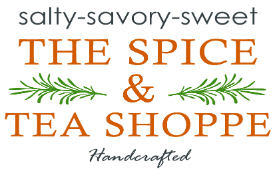
It is ancient in its application, salt’s ability to preserve food has, without exaggeration, contributed to the rise of civilization. I know, I know, it seems like a lot to put on a rock, but I don’t make the rules. I just enjoy eating them.
Salt, sodium chloride (NaCl), a building block of not only flavor, but of our bodies. It has the distinction of being one of the five taste modalities: sweetness, sourness, bitterness, savoriness (more colloquially understood as umami), and saltiness.
A (Very) Brief History
When I said ancient, I meant prehistoric. It is believed that the earliest known production and mining of salt is thought to have occurred in Romania around 6,000 BCE, though salt was known to be harvested along the banks of Lake Yuncheng in China around 6000 BCE as well. The point is, we have been mining and harvesting salt for a very, very long time.
Salt was valuable in antiquity, so valuable in fact that the modern word “salary” descends from the Latin word “salarium,” which originally referenced a Roman soldier’s allowance to buy, you guessed it, salt.
The mineral influenced the politics and superstitions of the ancient world. Every culture had its own myths surrounding salt. These anecdotes were handed down, becoming parts of folklore and moralism tales, even managing to make their way into rituals and religious ceremonies, many of which persist today.
As things began to modernize, the trading of salt became integral to the revenue of developing nations. Salt taxes were levied all over the world, most famously the gabelle, a French word that, in the 15th century, began to mean specifically taxing the consumption of salt. This was so universally despised by the people that it made the list of grievances (the Cahiers) drawn up for the Estates-General in 1789 on the eve of the French Revolution.
In modern times, it’s more profitable to sell salty food than pure salt. Therefore, food production and salt production go hand in hand and why our likeliest consumption point for sodium is in processed foods.
Culinary Uses:
Salt is a seasoning, a flavoring and a condiment which turns up the volume on food and just makes it all taste better, and somehow, more intensely like itself. Culinarily speaking, salt really lives and dies by its additives, minerality, and shape. All these factors play directly into how salt not only tastes but sits upon and absorbs into our foods, our tongues, and even how it dissolves and travels up and through our nostrils.
An example of what people think of when they hear the word “salt:” that white, pure, unadorned crystal, can be found in salt de mer, our Mediterranean Sea Salt. This is perhaps the closest we at The Spice and Tea Shoppe get to what many visualize when they think salt but the similarities stop there. Our salts are harvested from the sea or deep mines throughout the world and contain no iodine or other additives, Personally, for everyday home cooking, I prefer Kosher Flake Sea Salt. I don’t know that there’s been a piece of protein in our home that hasn’t seen a generous dusting of kosher salt…or a vegetable, for that matter. Another favorite is our Himalayan Pink Salt. Deep mine harvested, it is known as one of the purest salts on earth having never been exposed to harsh elements or pollutants. Because Himalayan pink salt contains less sodium chloride than other types of salts and up to 84 trace minerals (more than any other type of salt) it has become an extremely popular salt for cooking and baking.

As for something no chef worth their salt would be without, fleur de sel, or more specifically, our French Fleur de Sel Sea Salt. This is a finishing salt - no ifs, ands, or buts. If you’ve ever seen a beautiful steak, or a gorgeous piece of caramel with white wisps adorning their surface, you’ve likely seen fleur de sel, or its snowflake like brethren, Cyprus Flake Sea Salt. With its unique shape, often described as a pyramid, it dissolves more slowly, extending the flavor of everything it touches. Some might find this sacrilegious, but I’ve even used it on salad. Also, salt your salads, please! You don’t know what you’re missing if your salad’s missing salt.
If you're into a bit of smolder, our wood smoked salts are what you need. If you want to enhance your barbeque game, or just give the rim of your drink something a little special, this is where these salts shine. I can vouch that the Hickory Smoked Sea Salt was the best thing that I’ve ever finished a plate of chicken and waffles with, and mind you, that plate had chicken and waffles on it.

Now, for the fun stuff, the hot stuff, the stuff your parents warned you about. If you’re looking to add some heat to your life, look no further than our Ghost Pepper Sea Salt. It amps up anything you’re looking to put on a grill, and heat lovers (myself counted among them) will find nothing spices up the rim of a margarita glass quite like this stuff. But, if it’s fire you seek - real lasting sting, then you need to try our Scorpion Pepper Sea Salt. The barest pinch of this goes a long, long way.
This is just an introduction; the tip of the salt-berg, as it were. The possibilities are endless, but your salt journey can begin at thespiceandteashoppe.com
I can only think to close with something a far more eloquent and celebrated food writer, Margaret Visser wrote in Much Depends on Dinner: The Extraordinary History and Mythology, Allure and Obsessions, Perils and Taboos of an Ordinary Meal, (the title itself is a mouthful, but it’s worth it):
“Salt is the only rock directly consumed by man. It corrodes but preserves, desiccates but is wrested from the water.
It has fascinated man for thousands of years not only as a substance he prized and was willing to labour to obtain, but also as a generator of poetic and of mythic meaning.
The contradictions it embodies only intensify its power and its links with experience of the sacred.”
Let's Get Cooking
For more culinary inspiration, be sure to visit our recipe page. Here, you'll find a diverse collection of delicious recipes for every taste, season and occasion.


